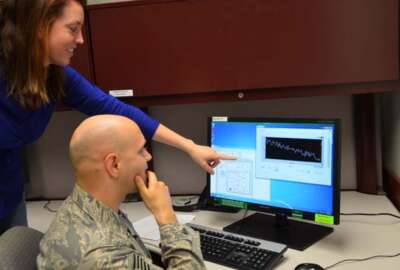
For DLA, there’s only one path to modernize its technology
Michelle Jacobs, the director of DLA’s hosting office, said the agency is using commercial cloud services to host more than 60 percent of its applications and...
The Defense Logistics Agency may be one of the few exceptions to the rule when it comes to cloud computing in the federal government.
While most agencies methodically move services into the cloud, usually starting small and building up, DLA is transitioning services off premise to commercial providers as quickly as possible.
Michelle Jacobs, the director of DLA’s hosting office, said DLA’s journey to the cloud isn’t going to be a long one with about 60 percent of all applications and systems already in the cloud.

“In 2016, we had only migrated two applications. We improved to 57 in 2017, and last year we ended up with 189 application environments that we had actually migrated. And since the beginning of 2019, we’ve also completed 10 additional application migrations,” Jacobs said on Ask the CIO. “Our end state goal would be 100 percent of our applications in the cloud. I’m not sure we will get there.”
And DLA isn’t just moving to private Defense Department only clouds. Jacobs said another goal would be to move as much as 90 percent of all applications would be in the true commercial cloud.
“DLA is probably a little different than the services. We don’t have a lot of command and control systems. We do most of our business with the commercial vendors so being in the cloud is an easier sell than say your Army, Air Force or Navy type of organizations that have major command and control systems for their warfighters that they have to support,” she said. “Not only are we looking at the cloud, but we are looking at our cyber threat. We are working closely with our commercial vendors to not only make sure we are securing the applications we provide to DoD, but the vendors we procure products and services from that we have confidence that they are also protecting their systems.”
The cybersecurity protections are a major piece to the review process DLA goes through before choosing which cloud makes the most sense for any specific application.
Jacobs said her office reviews the application’s architecture to determine its specific needs. Then it compares that architecture review to what clouds DLA has available. And finally, the agency decides whether the application can be migrated as a software-as-a-service instance instead of a traditional license-and-maintenance model.
“Initially, when we looked at application rationalization, it was looking at where we had duplicative applications for our functional customers. But what we realized is even if it’s a legitimate capability that they need, do we really need to buy commercial products or, worst case scenario, develop a government software solution? We really said, ‘let’s see if we can buy this as a service,’” she said. “That’s been really one of our long-term goals is to get out of the infrastructure business altogether and the development of applications if we don’t have to. We want to look at if we can buy IT capabilities-as-a-service, which includes software-as-a-service.”
Jacobs said DLA is already benefiting from the “as-a-service” model. It has more than 30,000 email accounts using Microsoft’s Office 365 and moved its learning management system from SAP to a SaaS instance last summer.
DLA is just starting the SaaS journey with its enterprise resource planning (ERP) system. Jacobs said it is piloting how its SAP system would work in the Amazon cloud.
Related Stories
DLA is starting with an infrastructure-as-a-service instance for the legacy ERP system. Jacobs said the agency is starting with individual modules of the warehouse management system from the mainframe system to the SAP capability in the cloud.
The agency also runs a second ERP that is built on more modern technology. Jacobs said DLA would like to eventually combine both ERPs into one and possibly work with SAP to offer these capabilities as a service to other agencies.
“What we have found is it’s not just DLA looking at this in a vacuum anymore. The DoD chief management officer is really taking a lead in rationalizing and consolidating business systems across the enterprise,” she said. “Some examples that we are going to be taking advantage of is task management tracking. Just late last year, the DoD designated the Army as the executive agent to serve as the provider of that business capability across the enterprise. It’s not about us rationalizing, but it’s going to be about us buying as a service that capability for task management through the Army. Another example that the department is working on right now is looking at the personnel management systems that are out there, like the Defense Travel System. Those are all systems we all leverage or all have our own. The CMO is looking across the enterprise to find the best of breed solution that we all can take advantage of.”
Jacobs said the migrations to the cloud has saved DLA about $85 million over the last three years.
“The savings has allowed us to reinvest in opportunities like what we are doing with the ERP pilot with SAP and AWS,” she said.
Copyright © 2025 Federal News Network. All rights reserved. This website is not intended for users located within the European Economic Area.
Jason Miller is executive editor of Federal News Network and directs news coverage on the people, policy and programs of the federal government.
Follow @jmillerWFED






